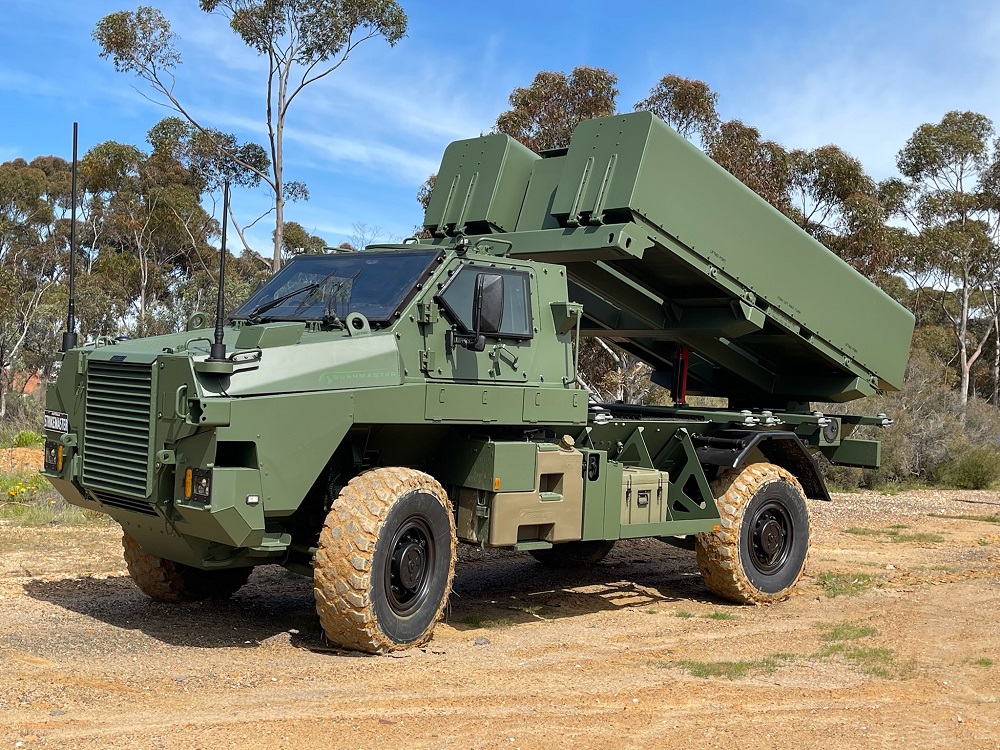
On 13 April 2022 the Moskva, flagship of Russia’s Black Sea Fleet, was hit by two Neptune missiles fired from a truck on the Ukrainian coastline. The warship sank the next day.
This was a spectacular success for the Ukrainian forces, but it also demonstrated more broadly the effectiveness of a mobile, land-based missile system designed to destroy ships far out to sea.
The Australian Defence Force is seeking such a system of its own under a project called Land 4100 Phase 2 for a ‘land-based maritime strike’ capability likely to play a crucial role in any future conflict in littoral areas.
In their defence strategic review, former defence minister Stephen Smith and former chief of the ADF Angus Houston recommended that the government accelerate and expand this program. With its strong focus on the need for ‘impactful projection’ and the need to safeguard Australia’s northern approaches, the Albanese government has accepted that recommendation.
A serious contender is a very serious ‘ute’ with a big bite—the utility version of the Bushmaster troop carrier carrying a pair of Naval Strike Missiles, advanced anti-ship and land-attack weapons with a range of 250 kilometres.
If accepted, the vehicle would be provided by Thales Australia and the missiles by Kongsberg Defence Australia.
The ‘StrikeMaster’ launcher would use the latest Bushmaster technology, with front doors as in variants sold to the Netherlands, and tougher axles as in those sold to New Zealand.
The missile is already operational in Malaysia, Norway, Poland and the US Navy and US Marine Corps, and is being delivered to Germany, Romania, Canada and Spain.
The system is versatile, with the US Marine Corps using a twin launcher on an unmanned joint light tactical vehicle and Poland using four missiles in a ‘quad pack’ carried on a large truck.
The missile can fly over land and sea at a low level, making it highly effective in both the littoral and blue-water environments.
It is designated as ‘totally passive’ in that it uses an advanced imaging infrared seeker to search for, detect and automatically recognise enemy vessels down to specific ship classes.
In April 2022, the Australian government announced the accelerated acquisition of the missile to replace Harpoon anti-ship missiles on the Royal Australian Navy’s Anzac-class frigates and Hobart-class destroyers. The missile would also be suitable for the RAN’s offshore patrol vessels if such a capability is required. A helicopter version could also be carried on the RAN’s MH-60R Seahawk helicopters.
The StrikeMaster launcher configuration can operate independently if needed, but it is designed to be part of the broader Kongsberg coastal defence system with integrated fire control and sensors.
It could be carried on the Royal Australian Air Force’s transport aircraft and on small landing craft, making it highly deployable. That is a core requirement for the US Marine Corps’ operational concept of ‘island hopping’ launchers as part of its anti-access/area-denial activities.
If the StrikeMaster is selected for the ADF, the launcher and vehicle will be made in Australia—the Bushmaster by Thales Australia, and the launcher electronics by Kongsberg.
The companies say this will provide a highly mobile and protected land-based maritime strike capability.
The missile would be common across the navy and army and could be used interchangeably between ships and the StrikeMaster.
Because the missile is already set to enter service with the navy, the companies say the system could be operational in two to three years.

